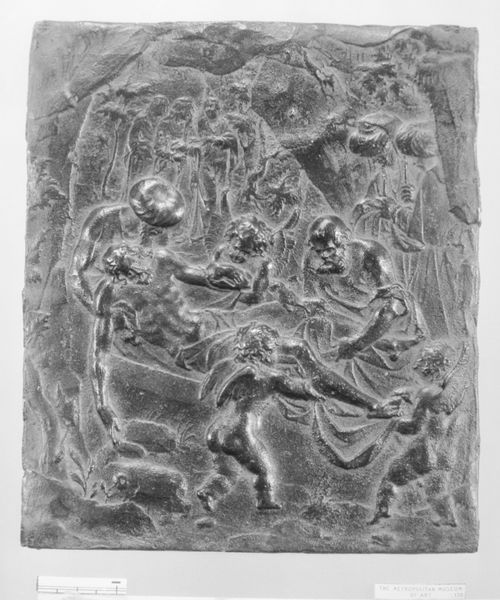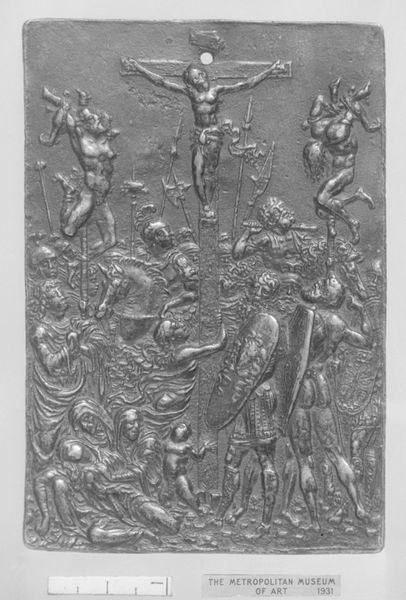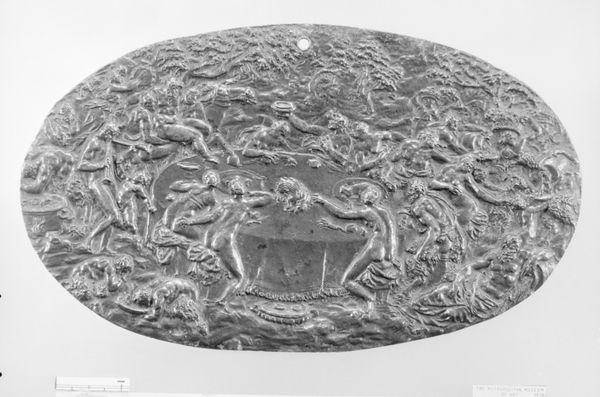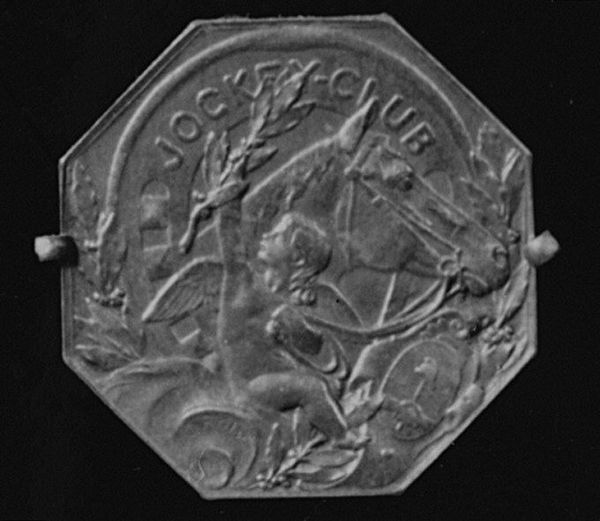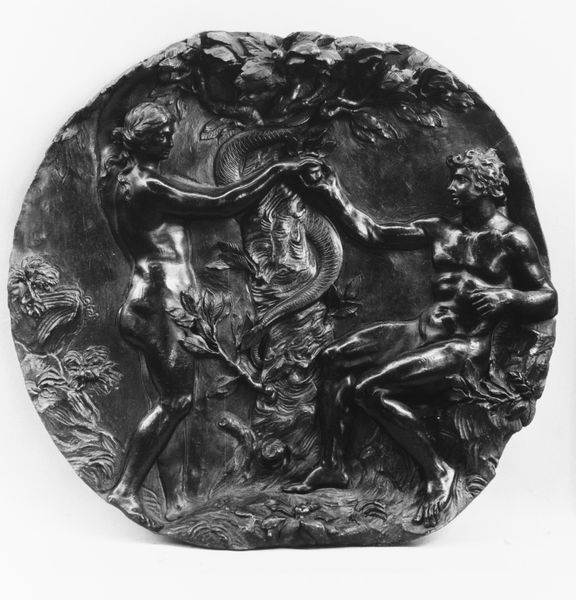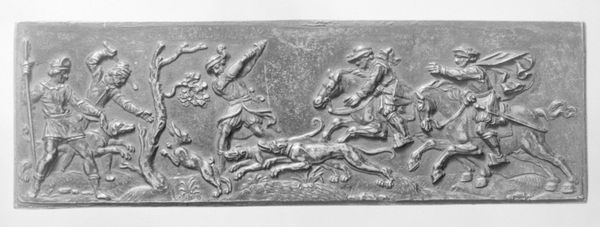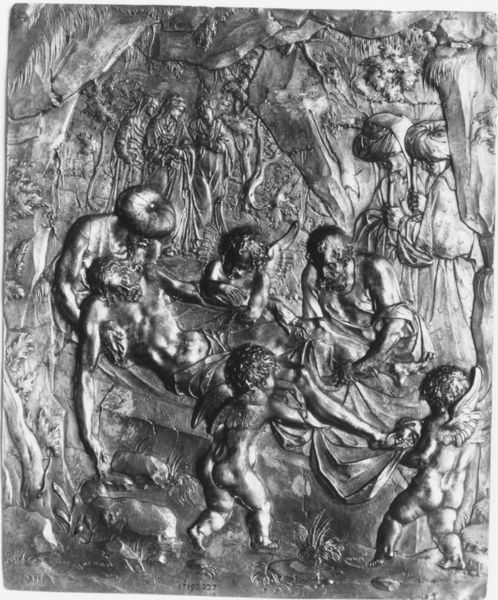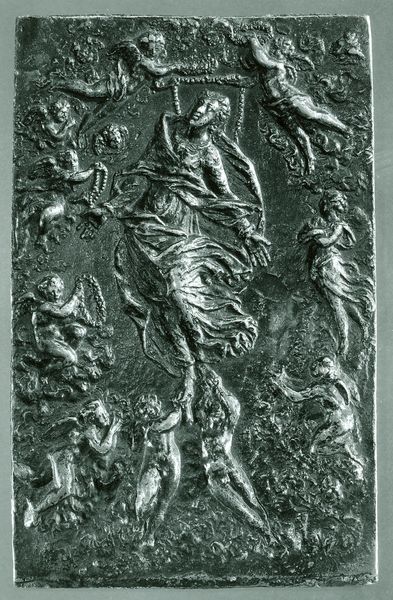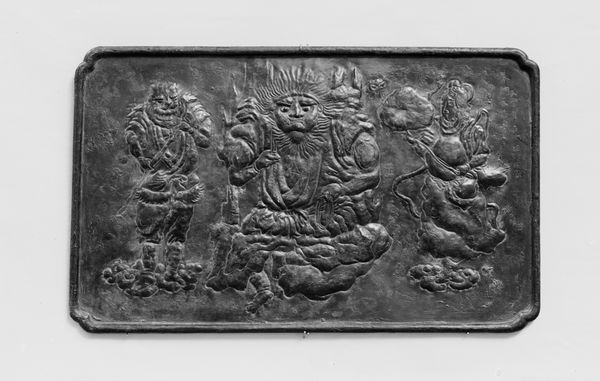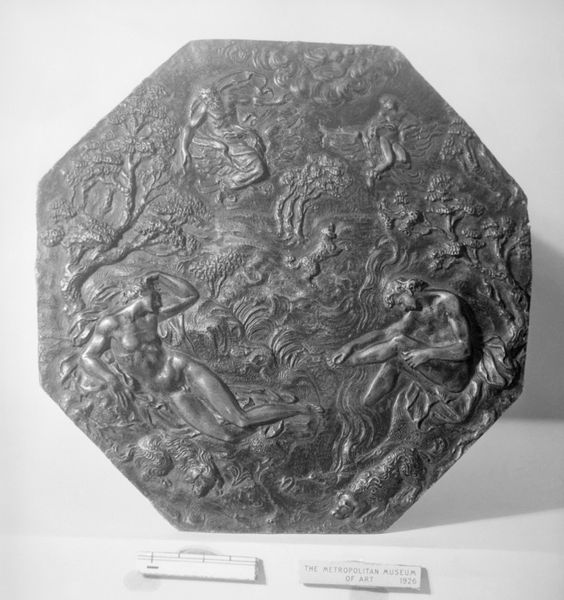
relief, bronze, sculpture
#
allegory
#
sculpture
#
relief
#
bronze
#
mannerism
#
sculpture
#
decorative-art
#
nude
Dimensions: Diameter: 5 in. (12.7 cm)
Copyright: Public Domain
Editor: Here we have Guglielmo della Porta’s bronze relief sculpture, "The Flaying of Marsyas," created sometime between 1585 and 1615. The bronze almost seems to writhe with the figures in it, the detail makes me almost feel as if I’m looking at the scene in real time. How would you interpret this work, keeping in mind its Mannerist style? Curator: What immediately strikes me is the brutality of labor represented. Della Porta isn't just depicting a scene; he's showing us the process of dominance and punishment through craftsmanship. The labor of flaying itself, usually unseen, is laid bare. But let's not forget the bronze itself. What kind of power dynamic do you think existed in 16th century society between those who were creating with this material and the consumers, considering the extensive production process? Editor: I suppose bronze would have been considered a luxury material, so there’s a clear class separation in play. The artist is using it here, but also representing further violence within it. So, it makes me wonder how the choice of bronze impacts our understanding of the narrative of the flaying itself? Is the artist complicit in some way, as a laborer producing this horrific act into art? Curator: Exactly! The sheen, the permanence of the material immortalizes this act. It becomes a commodity, circulated among a privileged audience. Consider the societal value assigned to materials like bronze, labor exploitation, and violence transformed into a refined piece displayed in the MET today, separated from the realities of its making. This division is exactly the core of this particular Mannerist take on art. Editor: It seems so straightforward once you lay it all out like that. I hadn't thought of the implications of bronze being almost like another layer obscuring the historical setting from the cultural consumption happening now. Thanks for broadening my perspective! Curator: The artwork becomes not just an allegory, but an object steeped in social and material relationships! Thank you for considering new aspects about the art piece with me!
Comments
No comments
Be the first to comment and join the conversation on the ultimate creative platform.

